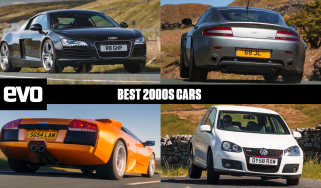Mercedes-Benz A-class (2012-2018) review – ride and handling
A conventional hatch now, the A-class fights hard in the premium hatchback class
Mercedes has worked hard to address one of the biggest shortcomings of the A-class in its 2015 facelift, namely the ride. Optional £595 adaptive dampers can be fitted to AMG Line and A250 models and bring with them a choice of Comfort and Sport options for the damping.
It makes a significant difference to the A-class's ride, with the car now exhibiting a much smoother and compliant setup over lumps and bumps. It still isn't the best in the segment however, with repeated undulations revealing a still firm secondary ride. Sport mode in particular is still far too firm and best avoided.
Also added in the 2015 facelift was a Dynamic select rotor which allows you to switch between muliple driving modes including Eco, Comfort, Sport and Invidual, which when the variable rate dampers are specced while let you seperate out engine and suspension characteristics.
Body roll is well managed, with the A-class staying relatively flat through corners and giving it a nicely agile feel which some rivals fail to exhibit. Grip is decent too, the front-end resisting understeer so the A’s stance is largely neutral, only pushing its nose wide if you’re carrying too much speed. Naturally the traction and stability control systems help keep everything in check, these working with rather than against you on the road.
Indeed, while the A-class can prove to be surprisingly enjoyable it lacks the keener responses of its BMW 1-series rival. Nor does it offer the sort of fine balance of its rear-drive adversary. The 4Matic models add plenty of traction, but do little to increase the engagement. The main reason for this seems to be its steering, which lacks any sort of communication or feel. There is a sense that there’s a better chassis underneath than is exhibited on the bread-and-butter models, but the steering detracts from the driving experience, even if it is reasonably accurate.




